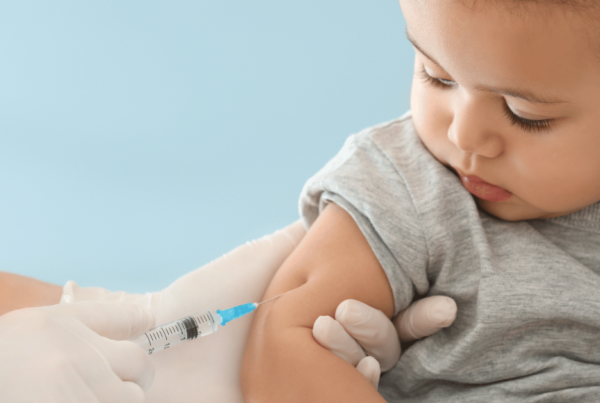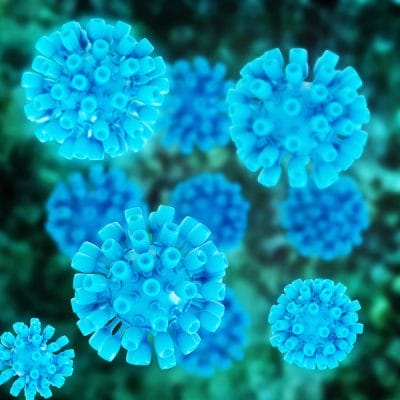- What is Diphtheria?
- How Does Diphtheria Spread?
- What are the symptoms of Diphtheria?
- What is Tetanus?
- How does Tetanus spread?
- What are the symptoms of Tetanus?
- What is Pertussis?
- How does Pertussis spread?
- What are the symptoms of Pertussis?
- When is the DTaP vaccine given?
- Conventional Treatment for Diphtheria
- Conventional Treatment for Tetanus
- Conventional Treatment for Pertussis
- Efficacy of the DTaP Vaccine
- Ingredients in the DTaP Vaccine
- DTaP Vaccine FDA Package Inserts
- Tdap Vaccine FDA Package Inserts
- Controversy and DTaP
- Whole Cell vs. Acellular Pertussis Vaccination
- Pregnancy, Breastfeeding, Cocooning, and the Tdap Vaccine
- DTaP Vaccine Reactions
- Postmarketing Surveillance
- Who should NOT get the DTaP vaccine?
- The Bottom Line and the DTaP Vaccine
What is Diphtheria?
Diphtheria is a severe throat infection caused by the bacterium Corynebacterium diphtheriae. The germ secretes a toxin that irritates the lining of the throat and upper lungs. The toxin can enter the cells surrounding the infected area, like the throat, and kill them. The buildup of dead cells and the inflammation causes severe coughing and breathing difficulty.
The toxin may also enter the bloodstream and travel to other body parts, damaging various organs and the nervous system. Damage to the heart is common and is usually irreversible. If the breathing muscles are affected, pneumonia and respiratory failure can develop (1).
The diagnosis is made by sending a throat swab to a lab for testing. Diphtheria is transmitted like the common cold. The illness may run its course without any treatment or worsen (1).
How Does Diphtheria Spread?
Diphtheria is a highly contagious bacterial disease that is spread by the coughing and sneezing of infected persons. Rarely, transmission may occur from skin lesions or articles soiled with discharge from lesions of infected persons (fomites). The incubation period for the disease is two to five days (1).
What are the symptoms of Diphtheria?
Symptoms of diphtheria include hoarseness, cough, noisy breathing, sore throat, slight fever (100-104 F°), irritability, chills, and an increasing inability to breathe (1).
Mild
A sore throat and a visible white coating on the tonsils or in the nose with no other symptoms (1).
Moderate
Labored breathing as the throat and airway becomes more swollen. Visibly swollen neck glands. Hospitalization in an ICU for treatment with intravenous antitoxin (a substance that neutralizes the germ’s toxin) and antibiotics. Recovery is possible without long-term problems (1).
Severe
When too much damage to the airway has occurred due to a delay in treatment, it can be fatal (1).
IMPORTANT TO NOTE: Many infections can create the same type of symptoms (strep throat, croup, etc.), so the primary clue to diphtheria is recent travel to a developing nation and the white membrane visible in the throat or nose.
What is Tetanus?
Tetanus is a painful, often deadly disease that is caused by an anaerobic gram-positive spore-forming bacteria (Clostridium tetani) that live in soil, manure, and the digestive systems of animals (horses, sheep, cattle, dogs, cats, guinea pigs, rats, and chickens) and pass into the soil in their stool. Soil treated with manure may also contain the germs. People also carry it in their digestive systems (2).
Tetanus is also known as lockjaw due to one of the main symptoms- the muscles, including the jaw, become rigid and locked. Once in the body, the bacteria produce a toxin that blocks the nerve signals that allow the muscles to relax. The result is powerful and painful muscle spasms that can break bones. Those who die of tetanus usually suffocate when the chest muscles become rigid. It can lead to “locking” of the jaw so the victim cannot open his mouth or swallow (2).
Tetanus leads to death in about 1 in 10 cases (2).
Today, tetanus is uncommon in the United States, with an average of 29 reported cases per year from 1996 through 2009 (2).
If an unvaccinated person gets a deep puncture wound that can’t easily be flushed out or a large, deep wound with dirt in it, a vaccine at that time may help prevent tetanus. It isn’t as effective as already having the series of shots in the system.
A tetanus immune globulin injection (called TIG) can also be given to an unvaccinated person to inactivate any tetanus toxin that may develop in the coming days. TIG is made from antibodies filtered out of donated human blood units and then treated and sterilized with various chemicals and filtering steps (2).
Three Types of Tetanus:
- Local – when the toxin affects only nerves near the wound site. Continuous muscle contractions can persist for several weeks and then gradually dissipate. A TIG shot will neutralize any toxin still floating around in the body tissues, but it won’t affect toxin already bound to the nerve cells. Antibiotics will be given to kill the tetanus bacteria. This milder form is fatal in about 1% of cases. Rarely can it progress into generalized tetanus (2).
- Cephalic – a rare form of the disease, occasionally occurring with otitis media (ear infections) in which C. tetani is present in the middle ear flora or following head injuries. The cranial nerves are involved, especially in the facial area (2).
- General (80%) – the most common form of tetanus, when the toxin spreads into the spinal cord and brain, affecting the entire nervous system. The severity of the disease is determined mainly by the timing of TIG treatment. Spasms last 3-4 weeks, and complete recovery may take months (2).
How does Tetanus spread?
Many people associate stepping on a rusty nail with getting a tetanus shot because the tetanus bacteria typically enter the body through a wound, including lacerations, punctures, scratches, animal bites, and cuts, especially those made by dirty or rusty objects. Because tetanus bacteria cannot live in the presence of oxygen, they thrive in deep wounds. It can also be introduced through surgery, burns, crush wounds, dental infections, animal bites, minor wounds and scrapes, self-piercing, and tattoos (2).
What are the symptoms of Tetanus?
The incubation period of tetanus is 8 days, ranging between 3-21 days. The worst symptoms of tetanus are usually headache, fever, chills, muscular stiffness of the jaw and neck, irritability, and fever. These occur one to three weeks after infection. Spasms and rigidity of the muscles follow them: the legs and feet become extended, the arms stiffen, the hands clench, and the jaw cannot open. As the stomach and chest muscles are affected, convulsions may occur, and breathing becomes difficult (2).
What is Pertussis?
Pertussis, also known as whooping cough or the hundred-day cough, is a highly contagious disease caused by bacteria (Bordetella pertussis) found in an infected individual’s nose, throat, and mouth (3,4). Most people who get whooping cough recover and acquire permanent immunity, although some people may get a milder case in the future (3,4).
Outbreaks of Pertussis were first described in the 16th century. Bordetella Pertussis was isolated in 1906.
Pertussis is primarily a toxin-mediated disease. The bacteria attach to the cilia of the respiratory epithelial cells, produce toxins that paralyze the cilia, and cause inflammation of the respiratory tract, which interferes with the clearing of pulmonary secretions (3,4).
How does Pertussis spread?
Like diphtheria, pertussis is spread through coughing, speaking, and sneezing. It is highly contagious (4).
What are the symptoms of Pertussis?
The incubation period is commonly 7-10 days, with a range of 4-21 days, rarely up to 42 days (3,4). The disease usually starts with cold-like symptoms and maybe a mild cough or fever. After 1 to 2 weeks, severe coughing can begin. Unlike the common cold, pertussis can become a series of coughing fits that continue for weeks.
In infants, the cough can be minimal or not even there. Infants may have a symptom known as “apnea.” Apnea is a pause in the child’s breathing pattern. Pertussis is most dangerous for babies. About half of infants younger than 1 year of age who get the disease are hospitalized.
Pertussis can cause violent and rapid coughing, over and over, until the air is gone from the lungs, and you are forced to inhale with a loud “whooping” sound. This extreme coughing can cause you to throw up and be very tired. The “whoop” is often not there, and the infection is generally milder (less severe) in teens and adults, especially those who have been vaccinated (4).
Catarrhal Stage (1-2 weeks) – Early symptoms can last for 1 to 2 weeks and usually include:
- Runny nose
- Low-grade fever (generally minimal throughout the disease)
- A mild, occasional cough
- Apnea — a pause in breathing (in infants)
Because pertussis in its early stages appears to be nothing more than the common cold, it is often not suspected or diagnosed until the more severe symptoms occur. Infected people are most contagious up to about 2 weeks after the cough begins.
Patients are most contagious during this stage because the highest number of bacteria are being produced. Antibiotics may shorten the time someone is infectious; however, most people do not know they have pertussis at this stage (3,4).
Paroxysmal Cough Stage (1-6 weeks, 4-7 days may seem terrible for the patient) – As the disease progresses, the traditional symptoms of pertussis appear and include:
- Minimal Fever
- Elevated mucus production
- Paroxysms (fits) of many, rapid coughs due to difficulty expelling thick mucus from the tracheobronchial tree. Followed by a high-pitched “whoop” due to the long inspiratory effort.
- Patients may become cyanotic during the paroxysms (small children especially).
- Vomiting
- Exhaustion after coughing fits.
Coughing fits can go on for up to 10 weeks or more, usually lasting no more than 2-3 weeks. Coughing fits generally become more common and severe as the illness continues and can occur more often at night. The disease can be milder (less severe), and the typical “whoop” is absent in children, teens, and adults vaccinated with a pertussis vaccine.
In China, pertussis is known as the “100-day cough.” Although you are often exhausted after a coughing fit, you usually appear fairly well in between. Recovery from pertussis can happen slowly. The cough becomes less severe and less common. However, coughing fits can return with other respiratory infections for many months after pertussis starts (3,4,5,6,7).
NOTE FROM THE CDC:
“In those who have been vaccinated:
- In most cases, the cough won’t last as many days;
- Coughing fits, whooping, and vomiting after coughing fits occur less often;
- The percentage of children with apnea (long pause in breathing), cyanosis (blue/purplish skin coloration due to lack of oxygen) and vomiting is less.”
Translation: Children who are vaccinated from pertussis may still catch pertussis. It is assumed in these children that symptoms will be less severe.
When is the DTaP vaccine given?
The DTaP vaccine protects against diphtheria, tetanus, and pertussis and is routinely given to children in a series of five doses starting at 2 months of age and continuing through 4 to 6 years.
DTaP is only for children younger than 7 years old. Different vaccines against tetanus, diphtheria, and pertussis (Tdap and Td) are available for older children, adolescents, and adults.
It is recommended that children receive 5 doses of DTaP, usually at the following ages:
- 2 months
- 4 months
- 6 months
- 15–18 months
- 4–6 years
DTaP may be given as a stand-alone vaccine, or as part of a combination vaccine (a type of vaccine that combines more than one vaccine together into one shot).
DTaP may be given at the same time as other vaccines (8).
Conventional Treatment for Diphtheria
Antibiotic treatment with erythromycin orally or by injection (40 mg/kg/day; maximum, 2 gm/day) for 14 days, or procaine penicillin G daily, intramuscularly (300,000 U/day for those weighing 10 kg or less, and 600,000 U/day for those weighing more than 10 kg) for 14 days.
The disease is usually no longer contagious 48 hours after antibiotics are instituted.
After therapy, two consecutive negative cultures should document the organism’s elimination (1).
Conventional Treatment for Tetanus
According to the Centers for Disease Control (CDC):
- All wounds should be cleaned.
- Necrotic tissue and foreign material should be removed.
- If tetanic spasms occur, supportive therapy and maintenance of an adequate airway are critical.
- Tetanus immune globulin (TIG) is recommended for persons with tetanus.
- TIG can only help remove unbound tetanus toxin. It cannot affect toxins bound to nerve endings.
- A single intramuscular dose of 3,000 to 5,000 units is generally recommended for children and adults, with part of the dose injected around the wound if it can be identified.
- Intravenous immune globulin (IVIG) contains tetanus antitoxin and may be used if TIG is unavailable.
- Because of the extreme potency of the toxin, tetanus disease does not result in tetanus immunity.
- Active immunization with tetanus toxoid should begin or continue as soon as the person’s condition has stabilized (2).
Conventional Treatment for Pertussis
Erythromycin is the drug of choice. This therapy eradicates the organism from secretions, thereby decreasing communicability and, if initiated early, may modify the course of the illness (4).
All close contacts of persons with pertussis: An antibiotic effective against pertussis (such as azithromycin, erythromycin, or trimethoprim-sulfamethoxazole) should be administered, regardless of age and vaccination status (4).
Efficacy of the DTaP Vaccine
Infanrix (5-dose series), Daptacel (5-dose series)
- According to the package inserts for Daptacel and Infanrix, the acellular pertussis vaccines are 84-89% effective at preventing pertussis disease as defined by the World Health Organization (9,10).
- The effectiveness of the diphtheria and tetanus portions of the vaccine has not been studied in vaccine trials. The CDC estimates effectiveness rates to be 97% and 100%, respectively (11).
How Long Does DTaP Vaccine Protection Last?
The duration of protection for diphtheria and tetanus is approximately 10 years. The duration of protection for pertussis is approximately 4-12 years. Studies have not been conducted on the acellular pertussis we use today (3).
How Does Natural Protection Against Diphtheria, Tetanus and Pertussis Compare?
Natural immunity after infection with pertussis is 4-20 years (3).
There is no natural immunity after a tetanus infection; therefore, people who recover from tetanus can be infected again (12).
Lifelong immunity is possible but not guaranteed with diphtheria infection. The resultant immunity is highly variable (13).
Ingredients in the DTaP Vaccine
DAPTACEL BRAND (SANON PASTEUR) CONTAINS:
- The germ and toxoid components
- Saline solution
- 2-phenoxyethanol (0.6 percent of the vaccine solution)
- Aluminum— 330 micrograms
- Glutaraldehyde —less than 50 nanograms (even smaller than a microgram)
- Formaldehyde— less than 0.5 micrograms (a recent change— it used to contain 100 micrograms)
INFANRIX BRAND (GLAXOSMITHKLINE) CONTAINS:
- The germ and toxoid components (made from cow tissue)
- Saline solution
- Aluminum— 625 micrograms
- Polysorbate 80— 100 micrograms
- Formaldehyde— 100 micrograms
- Glutaraldehyde (although used in production, isn’t listed as a final ingredient. Some is probably there)
CONTROVERSIAL INGREDIENTS IN THESE VACCINES:
- Bacterial Components & Toxoids (Derived from Cow Tissue) – The diphtheria, tetanus, and pertussis components are made using bovine-derived materials, which may be a concern for individuals avoiding animal products for religious, ethical, or dietary reasons.
- Aluminum (as Aluminum Phosphate or Aluminum Hydroxide) – Used as an adjuvant to enhance the immune response. While aluminum is naturally present in food and water, its use in vaccines raises concerns for some individuals about cumulative exposure and potential neurotoxicity, though scientific evidence supports its safety in vaccines.
- Polysorbate 80 (100 mcg per dose) – A stabilizer and emulsifier used in vaccines to keep ingredients evenly mixed. Some concerns exist about its potential to increase blood-brain barrier permeability, but no strong evidence suggests harm at vaccine doses.
- Formaldehyde – Used to inactivate bacterial toxins and kill viruses during manufacturing. While formaldehyde is a known carcinogen in high exposures, the small amounts in vaccines are considered safe and are much lower than levels naturally found in the human body.
- Glutaraldehyde – A chemical used to inactivate bacterial components in the vaccine. It is also used as a disinfectant in medical settings. Some individuals are concerned about its toxicity, but vaccine amounts are minimal and considered safe.
If you would like specific information regarding each ingredient, including studies, see: Vaccine Ingredients
DTaP Vaccine FDA Package Inserts
For infants and children up to 7 years of age
- Daptacel (Sanon Pasteur): Daptacel FDA Package Insert
- Infanrix (GlaxoSmithKline:) Infanrix FDA Package Insert (confidential Infanrix info from GSK, re: adverse events)
- Pentacel* (Sanon Pasteur). A DTaP, HIB, and polio combo. Pentacel FDA Package Insert
- Pediarix* (GlaxoSmithKline): A combination of DTaP, hep B, and polio. Pediarix FDA Package Insert
- Kinrix* (GlaxoSmithKline). DTaP/ polio combo. Kinrix FDA Package Insert
- Vaxelis* (MSP Vaccine Company). DTaP/IPV/Hib/HepB hexavalent combination vaccine. VAXELIS FDA Package Insert
- Quadracel* (Sanofi Pasteur Limited): Diphtheria and Tetanus Toxoids and Acellular Pertussis Adsorbed and Inactivated Poliovirus Vaccine Quadracel Package Insert #1, Package Insert #2
*Studies have shown a diminished antibody response to B. Pertussis antigens when poliovirus vaccine is administered with DTAP. The data are also similar to the findings of several earlier studies that consistently demonstrated a trend toward lower values of agglutinins to B. pertussis when IPV was combined with DTaP (14).
Tdap Vaccine FDA Package Inserts
For preteens, teens, and adults
- Adacel (Sanon Pasteur): Adacel FDA Package Insert
- Boostrix (GlaxoSmithKline): Boostrix FDA Package Insert
Tetanus and Diphtheria (Td) Only Vaccines
- D and T Toxoids Absorbed (Sanon Pasteur): D and T Toxoids Absorbed FDA Package Insert
- Tenivac (Sanon Pasteur) – ADULT Tenivac FDA Package Insert
Controversy and DTaP
Does the vaccine protect well enough against pertussis to warrant vaccination?
At 84-89% effectiveness, the pertussis vaccine does not work as well as diphtheria and tetanus (4).
Researchers have discovered that there are strains of pertussis not covered by the vaccine and that pertussis may be becoming resistant to vaccination (4).
Antibody titers (levels) drop over time, and by adulthood, most people are unprotected against pertussis. Most people are only permanently immune if they’ve contracted pertussis (4).
Whole Cell vs. Acellular Pertussis Vaccination
In the 1990s, the U.S. transitioned from using highly effective, whole cell pertussis vaccines (wP) to acellular pertussis (aP) vaccines due to concerns about side effects (15).
Early versions of whole-cell pertussis (wP) vaccines frequently caused mild side effects, such as fever, reduced appetite, prolonged crying, drowsiness, vomiting, irritability, redness, and swelling at the injection site. In rare cases, more serious reactions occurred, including high fever, febrile seizures, and hypotonic-hyporesponsive episodes (16).
Due to the risk of adverse effects, aP vaccines were developed as a solution. Acellular pertussis (aP) vaccines are less toxic than whole-cell pertussis (wP) vaccines because they contain purified Bordetella pertussis rather than whole inactivated bacteria.
Purified vaccines reduce the immune system’s exposure to unnecessary bacterial components, like endotoxins, that can cause inflammation and adverse reactions.
Children were 70-79% less likely to have adverse effects, including fevers, injection site pain and swelling and severe reactions requiring hospitalizations (17).
The trade-off is that aP vaccines are less effective than wP vaccines. The aP vaccine is 84% effective after three to five doses, and the wP vaccine is commonly delivered in a series of three and shows 94% effectiveness (9).
The most significant difference is how the aP vaccine wears off over time. For example, pertussis infection is five times higher in teens vaccinated with the aP vaccine vs the wP vaccine (18).
In as little as 2-3 years after the last dose of an aP vaccine, effectiveness wanes at 9.6% per year. By the time your child is 10, they will require a booster for protection (17).
It is also concerning that aP may not eliminate pertussis in asymptomatic carriers, leaving a reservoir of potential infection that is difficult to detect until an outbreak occurs (19).
In North America, children receive the aP vaccine.
Pregnancy, Breastfeeding, Cocooning, and the Tdap Vaccine
The Tdap vaccine is given to people aged seven and older. It has a lower dose of diphtheria and pertussis and is designed to be a booster rather than an initial round of vaccination.
Tdap Vaccine in Pregnancy
The Centers for Disease Control and Prevention (CDC) and the American College of Obstetricians and Gynecologists (ACOG) recommend that pregnant women receive the Tdap vaccine during every pregnancy, ideally between 27 and 36 weeks of gestation. This timing ensures optimal antibody transfer to the baby before birth, giving newborns the most substantial protection against pertussis in their first few months of life. The primary goal is to prevent pertussis infections in newborns before they are eligible for vaccination at two months (if one is following the traditional vaccine schedule) (20).
There was some concern that the Tdap vaccine could cause chorioamnionitis, an infection of the placenta and amniotic fluid. One meta-analysis found a 19% increase in chorioamnionitis rates without increasing preterm birth rates (a common result of chorioamnionitis) (21).
One large-scale study of over 100,000 pregnant women did not find an association with chorioamnionitis, preterm birth weight or adverse outcomes for the baby (22).
Tdap Vaccine and Breastfeeding
If a pregnant mother does not receive the Tdap vaccine during pregnancy, she may choose to vaccinate after birth. While some antibodies will be passed in breast milk if the mother is vaccinated after giving birth, it is variable in terms of what antibodies the baby receives (23).
The primary goal is to protect the mother from contracting pertussis and passing it on to her baby.
Babies less than two months of age are not eligible for vaccination and are at high risk of pertussis complications.
Breastfeeding without maternal vaccination shows a 73% reduction in pertussis infection in infants under two months old when compared to formula-fed infants (24).
With or without breastfeeding, vaccinated mothers reduce the risk of pertussis by 78-91% in babies less than two months of age by passing antibodies in utero (24).
If the mother chooses not to vaccinate, she should be encouraged to breastfeed.
DTaP Vaccine and Cocooning
When a mother chooses not to vaccinate during pregnancy but vaccinates after birth, she is “cocooning.” As a pertussis risk reduction technique, close family members can vaccinate to reduce their risk of infection and thereby protect the baby from pertussis.
Cocooning has only been studied in a mother and father pairing, showing a 64% risk reduction in pertussis infections in newborns. The protection findings were not statistically significant (25).
Currently, cocooning cannot be recommended as a strategy that confers the same benefits as maternal vaccination.
If maternal vaccination does not occur, cocooning may reduce the risk of pertussis infection in the baby as long as contact with non-vaccinated family members and caregivers is limited.
DTaP Vaccine Reactions
Signs to look for include:
According to the CDC, moderate or severe reactions to DTP/DTaP vaccines should be reported to and checked by a doctor immediately. All adverse reactions should also be reported to the Vaccine Adverse Events Reporting System (VAERS).
Common systemic reactions occur in 25% of children (see post-marketing surveillance below).
Injection site reactions occur in 25% of vaccine administrations. They become increasingly more common and severe with the fourth and fifth doses, 3% of which will cause swelling of the entire arm that lasts up to a week (1,2,4).
Known Severe Reactions
- 1 in 1,000 infants will suffer nonstop crying for three or more hours (which indicates encephalitis).
- 1 in 14,000 kids will have a seizure reaction.
- 1 in 16,000 children will have a fever greater than 105°F.
Brain injury, coma, and severe seizure disorders have been very rarely reported.
The vaccine package inserts state that the National Academy of Medicine has determined that any tetanus-containing vaccine can rarely cause brachial neuritis (dysfunction of the nerves in the arm) or Guillain-Barré syndrome (a temporary muscle weakness or paralysis) (11).
Postmarketing Surveillance
Common reactions noted after the release of the vaccine (26,27):
- cyanosis (blue color from low oxygen levels)
- diarrhea, nausea
- nodule and mass at the injection site, puritis, rash at injection site
- extensive swelling of the injected limb and nearby joints, angioedema
- skin infection (cellulitis) and abscess at the injection site
- severe allergic reactions (anaphylactic shock, swelling, hives)
- nonallergic rashes
- seizures, including febrile seizures, grand mal seizures, and mild seizures, somnolence, syncope
- hypotonic/ hyporesponsive episodes (shock)
- hypotonia (low muscle tone or decreased muscle function)
- bronchitis
- pneumonia, bronchitis
- lymph node swelling, thrombocytopenia
- bleeding from low platelet counts
- encephalopathy
- apnea, cough
- Sudden Infant Death Syndrome (SIDS)
- Screaming
- Ear pain
Who should NOT get the DTaP vaccine?
Some children should not get the DTaP vaccine or should wait (8).
Tell your vaccination provider if the person getting the vaccine:
- Has had an allergic reaction after a previous dose of any vaccine that protects against tetanus, diphtheria, or pertussis, or has any severe, life-threatening allergies
- Has had a coma, decreased level of consciousness, or prolonged seizures within 7 days after a previous dose of any pertussis vaccine (DTP or DTaP)
- Has seizures or another nervous system problem
- Has ever had Guillain-Barré Syndrome (also called “GBS”)
- Has had severe pain or swelling after a previous dose of any vaccine that protects against tetanus or diphtheria (8)
The Bottom Line and the DTaP Vaccine
What is diphtheria? Diphtheria is a bacterial infection caused by Corynebacterium diphtheriae, which produces a toxin that forms a thick gray membrane in the throat, potentially leading to breathing problems, heart failure, and nerve damage.
What is pertussis? Pertussis (whooping cough) is a highly contagious bacterial infection caused by Bordetella pertussis, leading to severe coughing fits that can cause breathing difficulties, vomiting, and pneumonia. Babies under two months of age are particularly at risk of requiring hospitalization.
What is tetanus? Tetanus (lockjaw) is a life-threatening condition caused by Clostridium tetani bacteria, which releases a toxin that leads to severe muscle stiffness and painful spasms, often starting in the jaw and spreading throughout the body.
How common is diphtheria in the U.S.? The last case of respiratory diphtheria was in 1997. A minimal number of skin diphtheria cases have been reported after international travel (28).
How common is pertussis in the U.S.? Typically, 10,000 cases of pertussis are reported each year (29).
How common is tetanus in the U.S.? There are less than 50 cases per year in the U.S. Typically, they occur in unvaccinated people or people who have not had their boosters up to date (30).
What are the risks of the DTaP vaccine? The DTaP vaccine is generally safe and well tolerated. Mild side effects are common to many other vaccines – fever, irritability, loss of appetite, and pain at the injection site.
More severe side effects are rare but include persistent crying, high fevers, seizures, Hypotonic-hyporesponsive episode (HHE) – A sudden period of unresponsiveness or limpness in infants that resolves without long-term effects and encephalopathy.
What are the benefits of the DTaP vaccine? Diphtheria is extremely rare in the U.S., so the vaccine confers little individual benefit unless your family travels to a country where diphtheria is endemic. From a public health perspective, vaccination is desirable to maintain herd immunity.
The vaccine is less effective for pertussis (85-90% effectiveness), than diphtheria (estimated at 97%) and tetanus (estimated at 100%). Nevertheless, vaccinated individuals are less likely to experience severe respiratory distress.
The U.S. has approximately 10,000 cases of pertussis per year. Pertussis is a more common ailment than tetanus and diphtheria (29).
Tetanus is not common in babies due to low exposure rates. However, vaccination is the only way to protect against tetanus, which can cause severe neurological complications.
Tetanus is transmitted more sporadically through injury and wounds, making exposure risk more unpredictable than a disease that is spread from person to person like diphtheria and pertussis.
References
- Centers for Disease Control and Prevention. (2021). Epidemiology and Prevention of Vaccine-Preventable Diseases. Hamborsky J, Kroger A, Wolfe S, eds. 14th ed. Washington D.C. Public Health Foundation. Chapter 7: Diphtheria. https://www.cdc.gov/pinkbook/hcp/table-of-contents/chapter-7-diphtheria.html
- Centers for Disease Control and Prevention. (2021). Epidemiology and Prevention of Vaccine-Preventable Diseases. Hamborsky J, Kroger A, Wolfe S, eds. 14th ed. Washington D.C. Public Health Foundation. Chapter 21: Tetanus. https://www.cdc.gov/pinkbook/hcp/table-of-contents/chapter-21-tetanus.html
- Wendelboe, A. M., Van Rie, A., Salmaso, S., & Englund, J. A. (2005). Duration of immunity against pertussis after natural infection or vaccination. The Pediatric Infectious Disease Journal, 24(5 Suppl), S58–S61.
- Centers for Disease Control and Prevention. (2021). Epidemiology and Prevention of Vaccine-Preventable Diseases. Hamborsky J, Kroger A, Wolfe S, eds. 14th ed. Washington D.C. Public Health Foundation. Chapter 16: Pertussis. https://www.cdc.gov/pinkbook/hcp/table-of-contents/chapter-16-pertussis.html
- Stehr, K., et al. (1998). A comparative effectiveness trial in Germany in infants who received either the Lederle/Takeda acellular pertussis component DTP (DTaP) vaccine, the Lederle whole-cell component DTP vaccine, or DT vaccine. Pediatrics, 101(1 Pt 1), 1–11.
- Ward, J. I., et al. (2006). Bordetella pertussis infections in vaccinated and unvaccinated adolescents and adults, as assessed in a national prospective randomized acellular pertussis vaccine trial (APERT). Clinical Infectious Diseases, 43(2), 151–157.
- Tozzi, A. E., et al. (2023). Clinical presentation of pertussis in unvaccinated and vaccinated children in the first six years of life. Pediatrics. Nov;112(5):1069-75.
- Centers for Disease Control and Prevention. (2021). DTaP (Diphtheria, Tetanus, Pertussis) Vaccine VIS. Www.cdc.gov. https://www.cdc.gov/vaccines/hcp/current-vis/dtap.html#cdc_vaccine_info_statement_why_get-why-get-vaccinated
- Fulton, T. R., et al. (2016). Protective effect of contemporary pertussis vaccines: A systematic review and meta-analysis. Clinical Infectious Diseases, 62(9), 1100–1110.
- Centers for Disease Control and Prevention. (1997). Pertussis Vaccination: Use of Acellular Pertussis Vaccines Among Infants and Young Children Recommendations of the Advisory Committee on Immunization Practices (ACIP). Www.cdc.gov. https://www.cdc.gov/mmwr/preview/mmwrhtml/00048610.htm#00002339.htm
- Centers for Disease Control and Prevention. (2022). About Diphtheria, Tetanus, and Pertussis Vaccines. https://www.cdc.gov/vaccines/vpd/dtap-tdap-td/hcp/about-vaccine.html
- World Health Organization. (2024). Tetanus. WHO Fact Sheets. https://www.who.int/news-room/fact-sheets/detail/tetanus
- Iowa Department of Public Health. Diphtheria Respiratory Health Professionals Fact Sheet. Revised July 2015. https://hhs.iowa.gov/media/10743/download?inline=.
- Edwards, K. M., et al. (1995). Effect of inactivated poliovirus vaccine on the antibody response to Bordetella pertussis antigens when combined with diphtheria-pertussis-tetanus vaccine. Journal of Infectious Diseases, 172(1), 59–63.
- Klein, N. P. (2014). Licensed pertussis vaccines in the United States: History and current state. Human Vaccines & Immunotherapeutics, 10(9), 2684–2690. https://doi.org/10.4161/hv.29610
- Kapil, P., et al. (2024). A whole-cell pertussis vaccine engineered to elicit reduced reactogenicity protects baboons against pertussis challenge. mSphere, 9(11), e00647-24.
- Rosenthal, S., et al. (1996). The safety of acellular pertussis vaccine vs whole-cell pertussis vaccine: A postmarketing assessment. Archives of Pediatrics & Adolescent Medicine, 150(5), 457–460.
- Alghounaim, M., et al. (2022). Whole-cell and acellular pertussis vaccine: Reflections on efficacy. Medical Principles and Practice, 31(4), 313–321.
- Warfel, J. M., et al. (2014). Acellular pertussis vaccines protect against disease but fail to prevent infection and transmission in a nonhuman primate model. Proceedings of the National Academy of Sciences, 111(2), 787–792.
- American College of Obstetricians and Gynecologists. (2017). Update on immunization and pregnancy: tetanus, diphtheria, and pertussis vaccination. ACOG Committee Opinion No. 718. September 2017. https://www.acog.org/clinical/clinical-guidance/committee-opinion/articles/2017/09/update-on-immunization-and-pregnancy-tetanus-diphtheria-and-pertussis-vaccination.
- D’Heilly, C., et al. (2019). Safety of maternal immunization against pertussis: A systematic review. Infectious Diseases and Therapy, 8(4), 543–568.
- Centers for Disease Control and Prevention. (2023). Tdap vaccination during pregnancy and risk of chorioamnionitis and related infant outcomes. CDC Stacks. Www.cdc.gov. https://stacks.cdc.gov/view/cdc/132644.
- Portillo, S., et al. (2024). Quantitative analysis of pertussis, tetanus, and diphtheria antibodies in sera and breast milk from Tdap vaccinated women using a qualified multiplex assay. mSphere, 9(4), e00527-23. https://doi.org/10.1128/msphere.00527-23
- Curtis, C. R., et al. (2017). Risk factors associated with Bordetella pertussis among infants ≤4 months of age in the pre-Tdap era: United States, 2002–2005. The Pediatric Infectious Disease Journal, 36(8), 726–735. https://doi.org/10.1097/INF.0000000000001528
- Baxter, R., Bartlett, J., Fireman, B., Lewis, E., & Klein, N. P. (2017). Effectiveness of vaccination during pregnancy to prevent infant pertussis. Pediatrics, 139(5), e20164091.
- Sanofi Pasteur. (2023). Adacel. Product insert from the vaccine manufacturer. https://www.fda.gov/media/119862/download
- GlaxoSmithKline. (2023). BOOSTRIX. Product insert from the vaccine manufacturer. https://www.fda.gov/media/124002/download
- Centers for Disease Control and Prevention. (2024). Diphtheria Surveillance and Trends. Www.cdc.gov. https://www.cdc.gov/diphtheria/php/surveillance/
- Centers for Disease Control and Prevention. (2025). Pertussis Surveillance and Trends. Www.cdc.gov. https://www.cdc.gov/pertussis/php/surveillance/
- Centers for Disease Control and Prevention. (2024). Tetanus Surveillance and Trends. Www.cdc.gov. https://www.cdc.gov/tetanus/php/surveillance/
Reviewed/Updated: 03/25









